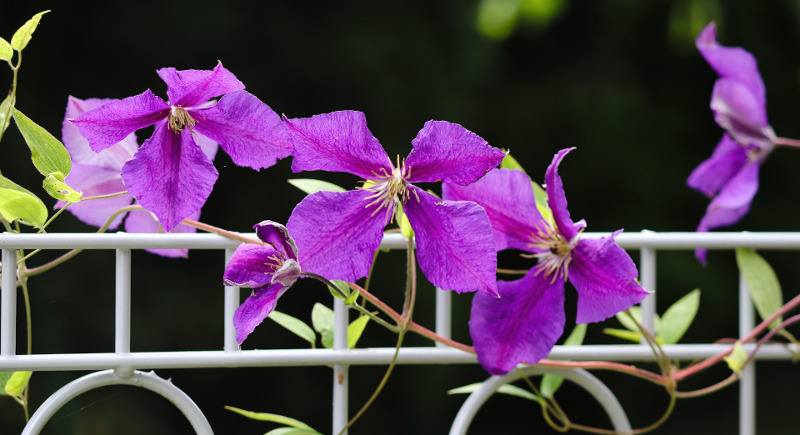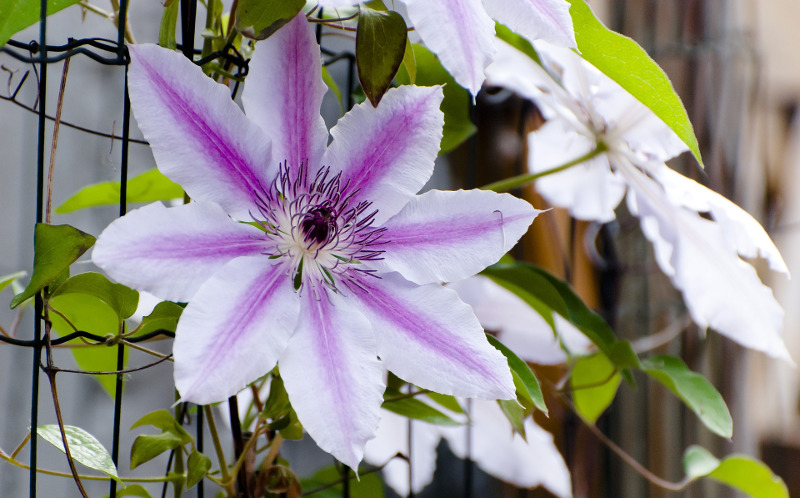Clematises are perennial vines that range in size, blooms, and habit. Most are vigorous climbers that need a sturdy trellis or fence, while a few grow slowly and may not need extra support. The flowers can vary in looks from tiny bell-like blooms to large, layered open stars. Clematises are also known for their attractive seed heads, which gives the vines an additional season of interest in the garden.

A few clematis vines are more like small shrubs than spreading vines, while others tend to run along the ground and make a good groundcover. The shrubby kinds are slow growers and work well in a container with a short stake, cage, or trellis to wrap themselves around. The ground runners are fun to plant in a sunny perennial border where they will weave themselves around the other plants.
Most clematises are climbing vines and wind themselves around anything they can grasp. Some can reach as high as 15-30 feet. You can guide them along a trellis by using wires and ties to direct their growth or provide anchors for the twining stems or tendrils to attach to.

One common way to grow a clematis vine is trained up a fence or along a wall in order to disguise it. You can tack nails in the fence or wall and string wires between them for the clematis to grab onto.
Clematis also can grow through other plants for a lovely effect. Plant a clematis at the bottom of a rose bush or an evergreen shrub. It will climb through the other plant’s branches and bloom through the foliage, giving you a graceful peek-a-boo effect. You can even pair a clematis with an annual vine for added drama as they wind themselves around each other.

* Note: a few clematises can be aggressive spreaders like the invasive ‘Sweet Autumn’ Clematis and may overtake nearby plants, if not kept in check.
 |
Author Kathy Jentz - Published 12-01-2020 |
